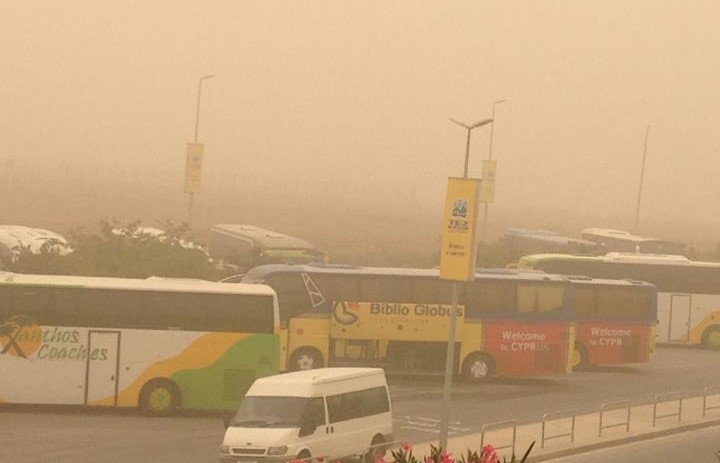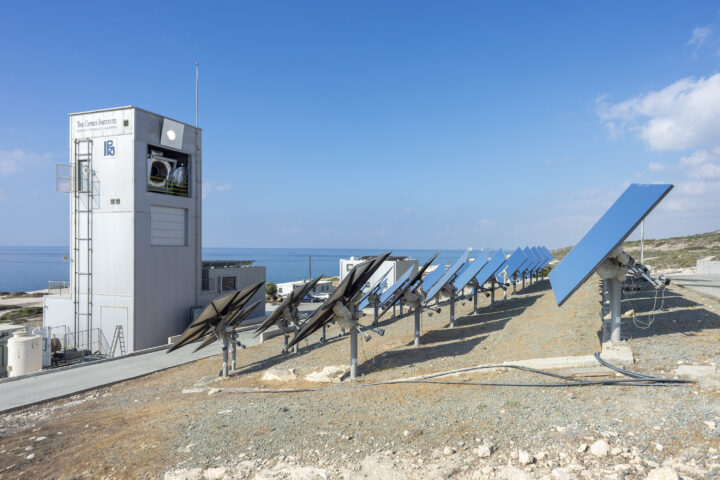Recent dust clouds over Cyprus directly result from climate change, as the phenomenon is becoming more frequent, damaging more than just air quality, says the Met Office.
On Friday, the island was under siege from yet another dust wave, which, in combination with elevated heat and humidity levels, created a celestial dome that diffused sunlight, enhancing the feeling of discomfort.
This phenomenon followed another dust wave earlier in the week, with record-high dust levels.
According to official records, the dust concentration of PM10 (suspended particles with a diameter of fewer than 10 μm) recorded in Larnaca was over 800 μg/m3 — the highest level recorded.
According to the World Health Organisation, daily exposure to PM10 should not exceed 45 μg/m3, as excessive exposure to high concentrations of particulate pollutants is associated with cardiovascular and pulmonary diseases.
“They are phenomena that we will learn to live with as they are the culmination of both climate change and the disturbances on the surface of the Sahara Desert,” said Nicolaides.
“Increased tension and wars in Africa and the Middle East have led vast land areas to desertification, increasing the amount of dust”.
Nicolaides added that other human activities in deserts, such as the Dakar Paris race, also add to the problem as they break the crust of the sand, making it easier to be picked up by winds.
“Although dust episodes from the Middle East are infrequent, there are becoming more frequent and are of particular concern because of the region’s desertification process and armed clashes”.
He said dust episodes are not uncommon, but the intensity and frequency are of concern.
“Such incidents used to occur mainly in the spring when there is a big difference between temperatures in the warm Sahara and the relatively cooler Mediterranean Sea.
“This was the main reason behind dust incidents a few decades ago,” said Nicolaides.
Toxic ozone
He argued that the increased frequency and persistency is clearly down to climate change.
Asked how the increase of dust waves could affect the way of life in Cyprus, Nicolaides pointed out: “Unfortunately, as a small island nation, there’s not much we can do about the situation but learn to live with the new weather order”.
He argued that climate change would change Cypriot’s lives and possibly the island’s economic model.
“Changes could negatively affect tourism, as we have not only seen an increase in dust incidents, but the measurements of infrared radiation have also increased.
“This could mean that exposure to Cyprus sun could become riskier,” said Nicolaides.
The head of the Cyprus Green Party, Charalampos Theopemptou, added that high ozone pollution also challenges Cyprus’ air quality.
“Air quality is not only damaged by high dust concentrations, mainly due to reasons out of our control.
“The island’s air is also polluted by our activity, which increases ozone levels in the lower atmosphere”.
Ozone is an odourless, colourless gas comprising three oxygen molecules (O3) and is a natural part of the environment.
It occurs in the Earth’s upper atmosphere, or stratosphere, and at ground level in the lower atmosphere, or troposphere.
Stratospheric ozone is what is known as the ‘good ozone’.
It forms about 10-30 miles above the Earth’s surface and forms an ozone layer, which shields us from too much of the sun’s harmful ultraviolet radiation (UV).
However, at the ground level, ozone is toxic for humans.
Ozone levels were above 100 μg / m3 for most of the past week.
“Ozone is formed when heat and sunlight cause chemical reactions between oxides of nitrogen (NOX ) and Volatile Organic Compounds (VOC), which are also known as Hydrocarbons.
“According to the European Environment Agency, around 40 Cypriots a year lose their lives to complications created by ozone pollution,” said Theopemptou.
“That is why it is so important to have trees and open areas like parks and lakes in cities, to cool down temperatures on pavements and roads, to bring down ozone pollution”.










